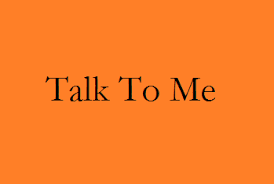Communication for Beginners
 One of the first things I do when I hire an associate attorney is teach the attorney how to build rapport with prospective clients. The definition of “rapport” is “a close and harmonious relationship in which people communicate well and understand each other’s feelings or ideas.”
One of the first things I do when I hire an associate attorney is teach the attorney how to build rapport with prospective clients. The definition of “rapport” is “a close and harmonious relationship in which people communicate well and understand each other’s feelings or ideas.”
An important element to building rapport with others is to use techniques that help them to know, like, and trust you.
Is it possible to do that with most of the people we meet? Is there a process we can follow?
In his book, The Like Switch: An Ex-FBI Agent’s Guide to Influencing, Attracting, and Winning People Over, Jack Schafer, a former special agent for the FBI’s National Security Division’s Behavioral Analysis Program, described the techniques he used as an FBI agent to influence, attract, and win criminals over so that they would divulge personal and confidential information to him.
In the chapter that discussed how to build rapport, Schafer wrote:
People are communal beings. We naturally seek to connect to other people. Rapport builds a psychological bridge between people and paves the way for various levels of friendship to develop. If I can build rapport with you, I can be relatively certain you will like me. It’s that simple.
When I interviewed witnesses and suspects, my first task was to build a psychological connection between myself and the person I was interviewing. People, especially suspects, rarely open up to people they don’t like. In the case with suspects, I am asking that person to reveal secrets that would put him or her in prison for a long time. On one occasion, I interviewed a repeat sexual assault suspect. We connected on the topic of sports. Once the rapport bridge was established, I was able to delve deeper into his personal life. Eventually, the suspect confessed his crimes. The suspect voluntarily maintained his connection with me long after his trial, conviction, and sentencing.
****
In letters, he thanked me for being his friend and treating him with respect. Treating the suspect with respect is possible; being his friend was an illusion.
If an FBI agent can build rapport with a criminal suspect, you and I should be able to build rapport with almost anyone we meet.
There’s a very simple and effective process that I use to build rapport with my prospective clients. When I explain the process to you, it will immediately make sense to you, and you’ll be able to implement it with the next person that you meet.
The easiest way to build rapport with another person is to engage in a discussion about one or more of the four topics that the other person enjoys talking about the most. Here are the four topics, which can be remembered with the acronym “FORM”:
- Family (includes pets)
- Occupation (includes place of employment and businesses owned)
- Recreation (includes hobbies, vacations, and sports)
- Money (includes earnings, investments, and economic conditions)
When you begin a conversation with a person whom you don’t know, the best topic to start with is family. The order of the topics is important. Depending on how much the person likes talking about a topic, you can stay on the topic or quickly move to the next topic. By following this process, it’s easy to create a bond with another person, which, in turn, helps to establish trust between you and the person.
The FORM process may be obvious to you; it was to me when I first heard about it. No one had to teach me the process. It was something I picked up from observing my parents and relatives while I was growing up.
A few years ago, I was at a party where I met a counselor who worked at a college. His job was to assist students who had issues that were troubling them. I asked the counselor what his biggest challenge was in performing his job. He said that when he started working with college students, he was shocked by their inability to communicate with him on a one-on-one basis. He said that many of the students he works with have trouble verbally answering questions and communicating their thoughts.
When I asked him if he could give me an example of what he was talking about, he said that he had recently met with a female student who was in her early 20s. When he attempted to discuss an issue that was causing her anxiety, she had trouble answering his questions. In response to several of his questions and suggestions, she simply stared back at him. He said that about an hour after she left his office, he received an email from her.
In her email, the student apologized for her inability to communicate with him and proceeded to provide answers to the questions that he had asked. Even though she was unable to verbally respond to the counselor, she had no problem putting her thoughts in writing and sending them to him in an email. He said that he had experienced that same problem with several other students.
Prior to my conversation with the counselor, we had never met. I began our conversation by asking him where he grew up. We then had a short conversation about his family, and then I asked him about his occupation. Of course, it was during that conversation that our discussion about the college students came up.
Unfortunately, most of the communication that now takes place between people is through texting, email, and social media. As a result of this technology, the children and teenagers of our society are not learning the communication skills that most children and teenagers learned prior to the 1990s.
Consequently, it’s more important than ever to focus on learning and following the FORM process, which facilitates and enhances one-on-one, face-to-face communication.




1 Comment
Dear Georgette and Harry –
Once again, a great article with wonderful advice! As a counselor,and even before that, as a teacher of both elementary and high school students, I found it easy to assist students in the way you suggest. Although I didn’t have the FORM word to lead me, God must have guided me. The years I was in the classroom, and then in my counseling office, I felt relaxed – at ease – with the one with whom I was speaking. I think that was communicated almost silently to each one. It’s amazing to me that I’ve heard from so many students who weren’t in my “L to Z” part of the alphabet, but who remember me for some simple contacts I had with them. Thank you, Harry! I think we are much alike!! Blessings and love to both of you – Sister Roberta